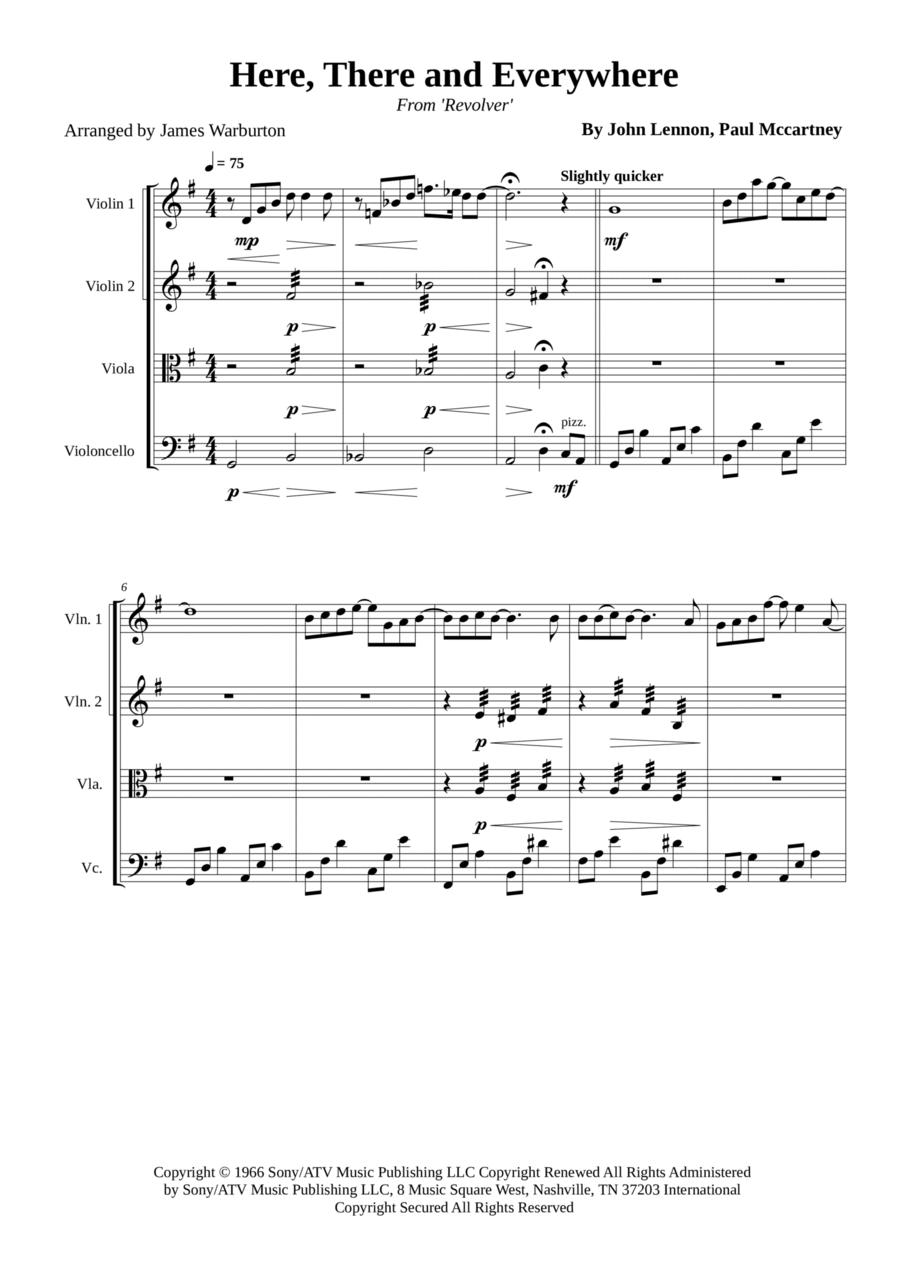String Quartet Cello,String Quartet,Viola,Violin - Level 3 - Digital Download SKU: A0.1424464 By The Beatles. By John Lennon and Paul McCartney. Arranged by James Warburton. Pop,Wedding. 8 pages. James Warburton #1005654. Published by James Warburton (A0.1424464). Introducing my latest arrangement of 'Here, There and Everywhere' by The Beatles!Recently featured in a candlelight concert, you can catch a glimpse of how it sounds through the YouTube link provided.Arranged with an enjoyable experience for wedding and event attendees in mind, as well as being fantastic in concert settings, this arrangement is tailored for the modern string quartet.Each part includes rehearsal marks to smoothly navigate any potential hiccups during rehearsals. Plus, optimized for tablets, you won't find cumbersome repeats, DS's, or codas to trip over.I hope you add this arrangement to your repertoire and bring many moments of musical delight to your performances!
